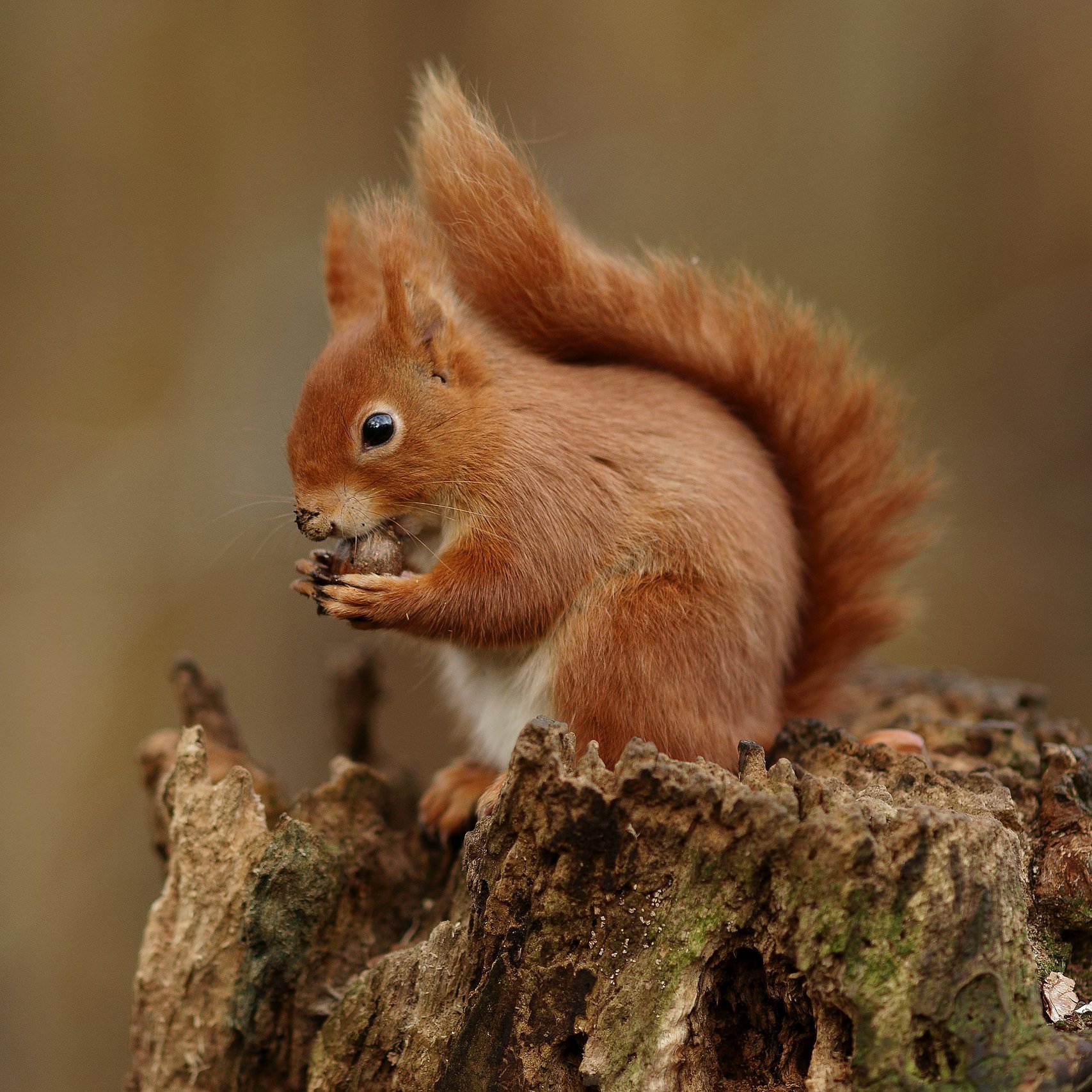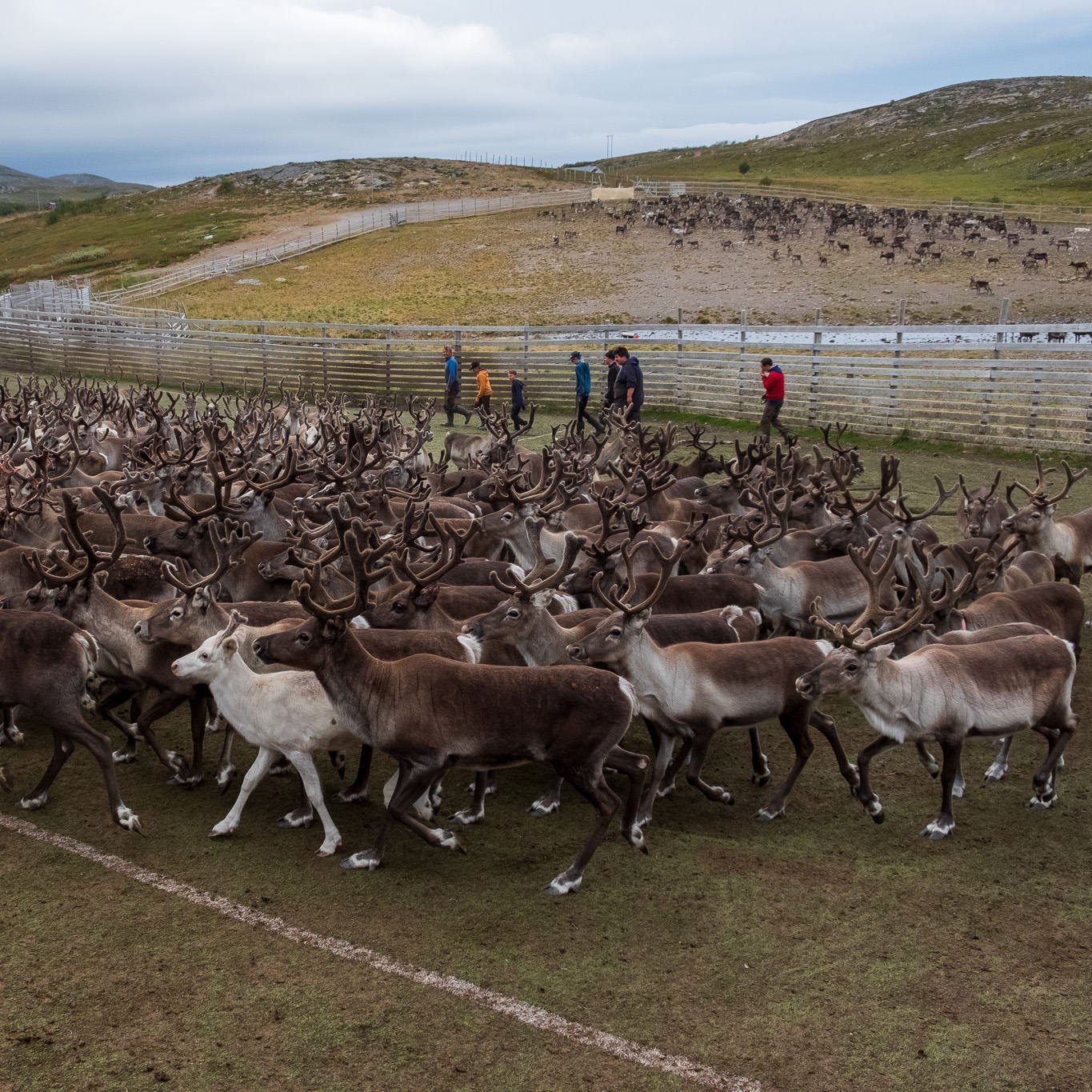England’s Squirrel Obsession
Campaigns to save the red squirrel, and cull non-native grays, have little to do with ecology.
SEPTEMBER 10, 2024
The sitter in “A Lady with a Squirrel and a Starling,” painted between 1526 and 1528, wears a white fur cap and stares straight ahead with the stone face of a woman trying not to draw the attention of the nut job who has sat beside her on a city bus. Art historians say the artist, Hans Holbein the Younger, added the red squirrel in her lap and the European starling behind her shoulder — both common pets at the time — as clues to her identity. She is thought to be the wife of Francis Lovell, a wealthy official in the court of Henry VIII whose family crest featured squirrels and who owned an estate called East Harling — which sounds like “starling.”
Five hundred years later, though, Holbein’s famous portrait reads like an ecological omen. In the 19th century, so-called acclimatization societies — and, in some cases, individual Anglophiles — introduced European starlings to North America, Australia, South Africa and New Zealand, to make unfamiliar wilds more like the landscapes of England. Around the same time, Englishmen started releasing eastern gray squirrels from North America on the grounds of their estates. The gray squirrels were larger and more gregarious than Britain’s native red squirrels, a solitary and adorable species with pointed ear tufts and white bibs.
The spread of these squirrels throughout England “coincided with the beginning of ecological study in Britain,” the zoologist Derek Yalden wrote in The History of British Mammals, and rallied Brits to the defense of their native reds. As conservationists struggle with the fallout of these introductions, Lady Lovell, sitting with her starling and squirrel on the eve of the British Empire, appears armed for conquest like Athena with spear and shield.
The questions of national identity, aesthetics and class, which convinced some people that English songbirds would improve American parks, persist and, in the case of the British red squirrel, influence conservation priorities and practices today.
“From the 15th through to the start of the 20th century, during the era of European expansion and colonization, moving flora and fauna to where we saw fit was the norm,” Julie L. Lockwood writes in Invasive Species: A Very Short Introduction. Not all invasive species — a non-native species that spreads beyond its point of introduction or causes environmental or economic harm — were introduced knowingly. Some of the most consequential, such as black rats and earthworms, arrived in the Americas as “stowaways” on European ships. But the deliberate introductions often left clear paper trails. In 1890, the leader of the American Acclimatization Society released a few dozen European starlings in Manhattan’s Central Park. These birds bred and spread so explosively — joining up, in all likelihood, with starlings released in other parts of the continent — that an estimated 150 million European starlings inhabit nearly the whole of North America today. Many Americans admire the enormous flocks of starlings, whose movements — called “murmurations” — seem to fracture and rearrange the pieces of the evening sky. But farmers blame starlings for crop damage, while birders say they contribute to the decline of native songbird species, which the starlings out compete for nesting sites.
Lockwood urges readers not to judge our forebears too harshly for “acting in their interest, for better or worse, and according to the information and values of their time.” But these interests and values did not simply dissolve at the start of the 20th century, when new concepts such as ecology and evolution changed our relationship to the natural world. The questions of national identity, aesthetics and class, which convinced some people that English songbirds would improve American parks, persist and, in the case of the British red squirrel, influence conservation priorities and practices today. “Many of the red’s proponents regard it as the truest of true Brit animals,” the historian Peter Coates writes in Squirrel Nation: Reds, Greys and the Meaning of Home.
These proponents include the king himself. “I cannot think of a better mascot for our country than the red squirrel,” Charles said in 2009, when he was the Prince of Wales. Five years later, he ordered the killing of 4,000 eastern gray squirrels on his Duchy of Cornwall estate. “The gray just doesn’t belong here,” he explained. Some people call these kinds of statements “biological nationalism” or “eco-xenophobia,” and while it is heartening to see public officials encourage people to love and protect native wildlife, Coates’ book compiles compelling evidence that the British red squirrel also needs rescuing from the gentlemen who champion its survival. For Charles and many of his peers, red squirrel conservation seems less about restoring ecosystems than about exercising an elite prerogative over rural lands — and keeping alive a myth of an English landscape whose valorization, in literature and art, has wreaked environmental havoc around the globe.
The American writer William James Stillman wrote in the 1890s that there was “nothing in the English landscape so beautiful as the common squirrel.” He meant the Eurasian red squirrel, which was Britain’s only native squirrel and once enjoyed the whole of England, Wales and Scotland to itself. Stillman’s appreciation was shared by his close acquaintance John Ruskin, the Victorian art critic and connoisseur of English landscape. Of all the planet’s four-legged creatures, Ruskin wrote, “there is none so beautiful, so happy, so wonderful, as the squirrel.” The “little dark-eyed miracle of the forest” was “innocent in all his ways, harmless in his food, playful as a kitten, but without cruelty.”
Over the last century, the British government has tried to eradicate gray “tree rats” through hunting, traps, poison and contraception. None of these campaigns managed to thwart the grays’ advance.
The same decade Stillman praised the “common squirrel,” however, was the start of its decline. In 1890, the Duke of Bedford, an avid collector of foreign animals, released 10 eastern gray squirrels from North America at his estate in Woburn near London. It was not the first introduction of gray squirrels to Britain — Benjamin Franklin, serving as Pennsylvania’s representative in London more than a century earlier, had gifted a pair as pets to a friend’s teenage daughter — but it turned out to be the most consequential. The Woburn grays bred so prolifically that their offspring were captured and released in several new places, including the London Zoo. The zoo then helped the squirrels establish a population in nearby Regent’s Park. The tame gray squirrels became popular with Londoners, who rarely saw the shier red squirrels, but the grays soon found their way out of London and into red territory in the countryside.
By the 1920s, Brits were observing only gray squirrels in forests where they had previously seen reds. Many people believed eastern gray squirrels violently killed the native reds, though there has never been much evidence to support the claim. (One of the main culprits seems to be a disease called squirrel pox virus, which gray squirrels resist but transmit to vulnerable reds.) Over the last century, the British government has tried to eradicate gray “tree rats” through hunting, traps, poison and contraception. None of these campaigns managed to thwart the grays’ advance. Only 150,000 or so red squirrels remain in Britain today, the vast majority in Scotland, versus 2.5 million eastern grays. Many Brits, especially in the south near London, have never seen a red.
Prior to the arrival of the eastern gray squirrel, many Brits viewed their “common squirrel” as “a fast-breeding vermin species no different from rats, mice and rabbits,” Coates writes. Like grays, red squirrels robbed the nests of songbirds and stripped the bark and ate the shoots of trees. As the red squirrel became rarer, though, it grew into “an almost mythical creature in a bucolic homeland of leafy Deep England” — helped by the publication of Beatrix Potter’s beloved The Tale of Squirrel Nutkin in 1903. Conservation campaigns often adopt a “flagship species” to win hearts and solicit donations, but many Brits’ obsession with saving the red squirrel seems to have more to do with a certain idea of “bucolic homeland” than with any actual ecosystem. Squirrel conservation has become a way to reinforce a privileged niche within the social landscape of rural England. British aristocracy and gentry still own at least 30 percent — and perhaps almost half — of English land.
The historian David Lowenthal called it an “English creed that all land requires supervision.” “Far from knowing best, nature needs vigilant guidance,” he explained. “The aristocracy and gentry alone are fit for this nurturing task.” Indeed, Ruskin believed that not just anyone could appreciate the squirrel’s beauty. “Landscape can only be enjoyed by cultivated persons,” he wrote. The British elite had developed an “innate instinct for beauty” through literature, music and painting. William Wordsworth reached a similar conclusion. He called the Lake District — one of the few regions of England where red squirrels remain — “a sort of national property, in which every man has a right and interest who has an eye to perceive.”
Despite valuable insights from British ecologists, the popular understanding of squirrel conservation as a war between two species, red and gray, persists.
You can detect this elitism and entitlement in the words of the red squirrel’s most powerful defenders, who seem guided more by a self-important noblesse oblige than by any real understanding of ecology or love of nature. “What do scientists know about squirrels?” Harold Macmillan, the Conservative prime minister from 1957 until 1963, wrote on an official’s memo advising against a bounty scheme for killing gray squirrels. While leading the country, Macmillan regularly found time to badger his scientific advisers over gray squirrels. “Like many landed gents, Macmillan was hostile to greys — a hostility so ingrained he did not need to explain it,” Coates writes. “He loved a pheasant (and a grouse) shoot, and shooters saw greys as a major threat to gamebird chicks.” Macmillan felt his social status afforded him clearer insights into nature than any scientific study: “What I say is true and known to every [game]keeper in Britain.”
✺
Macmillan likely would have disapproved of the findings of a 2016 study from researchers at the Zoological Society of London, which showed that Britain’s gray squirrels rarely migrate far from where they are born to link up and breed with gray squirrels in other places. “The findings,” they wrote, “support the hypothesis that squirrel dispersal in the U.K. was mainly a consequence of human activities rather than grey squirrel propensity to spread and quickly invade new areas through the formation of a large, homogeneous expansion front.” In other words, the gray squirrel is not a conquering army but a biological weapon in human hands.
Despite valuable insights from British ecologists, the popular understanding of squirrel conservation as a war between two species, red and gray, persists. “We only call ourselves the Red Squirrel Protection Partnership because if we called it the Grey Squirrel Annihilation League people might be a bit less sympathetic,” Rupert Mitford, a baron, told the Guardian in 2008. “But we do nothing with red squirrels apart from save them by killing gray squirrels!” This framing makes it easy for the landed elite to posture as conservationists while discouraging a more holistic assessment of the health of nature in the English countryside.
Mitford’s family once owned the Mitford Estate, a 5,000-acre (2,024-hectare) property whose website now boasts of a “full time complement of keepers” who rear and release pheasants. Ring-necked pheasants are an Asian species that country gentlemen started bringing to Britain in massive numbers in the 19th century. Nowadays as many as 50 million pheasants are released every summer in the British countryside for men in tweed to blast with shotguns. The total biomass of pheasants and red-legged partridges (another popular game bird, introduced to England from southwest Europe) at the peak of summer is probably greater than that of all the native breeding birds in Britain combined. “Why are these omnivorous birds allowed to devastate our wildlife, clearing woods and fields of insects, lizards, baby snakes, seeds and anything else they can find?” the journalist George Monbiot wrote. In 2020, the British government added pheasants and partridges to a list of species causing ecological, environmental or socioeconomic harm, a list that also includes the gray squirrel.
The patrician love of red squirrels seems not to flow from a genuine appreciation of Britain’s native fauna but rather from the feudal presumption to determine which species belong and which do not belong on country land.
Nevertheless, British gamekeepers organize land and forest management around the pheasant. They routinely kill native foxes and corvid birds like crows, rooks and jackdaws to protect non-native pheasant chicks. Rare and protected raptors also disappear routinely near estates with pheasant shoots — including two hen harriers near the royal family’s Sandringham Estate in 2007 while Prince Harry was hunting there with a friend. A 2023 Guardian investigation revealed 18 suspected cases of illegal poisoning and other wildlife crimes at Sandringham since 2003. These include two disappearances of the endangered raptor called Montagu’s harrier and their satellite tags and a goshawk whose body was burned before investigators could determine its cause of death.
The patrician love of red squirrels seems not to flow from a genuine appreciation of Britain’s native fauna but rather from the feudal presumption to determine which species belong and which do not belong on country land. Native red squirrels and non-native pheasants are welcome, while gray squirrels, as well as native foxes, corvids and raptors, must be culled. Ironically, red squirrels now survive better in conifer forests with many introduced tree species, such as Douglas fir and Sitka spruce, than they do in deciduous forests with oaks and other native hardwood trees. It was non-native trees that so offended Wordsworth decades before the arrival of gray squirrels in Great Britain. These trees caused “great injury to the appearance of the country,” he complained, wishing that forest trees “ought almost entirely to be such as are natives of the country.”
Coates quotes Thoreau’s famous dictum that animals “are all beasts of burden, in a sense, made to carry some portion of our thoughts.” His book shows how saddled the squirrel, that poor little rodent, has become not just with metaphor but with history, national identity and class. “The heritage landscape is less and less England, more and more ‘Englandland,’ Europe’s all-engulfing offshore theme park,” Lowenthal wrote in 1991. In the red squirrel, Englandland has a Mickey Mouse.
PHOTO: Red Squirrel, Newchurch, Geograph Britain and Ireland, by Peter Trimming (via Wikimedia)




